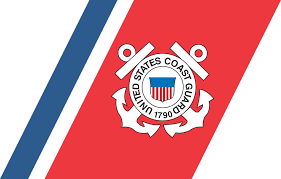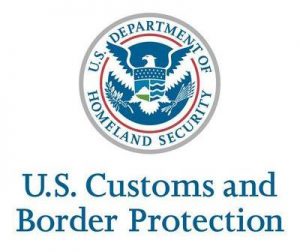The High Water Advisory for MM 167.5 to MM 254.5 AHP has been updated for the Baton Rouge Gauge at 40’ and Rising.
Highlights:
Ocean Going Vessel requirements, Baton Rouge Harbor (MM 225-234)
1. Ocean going vessels must use tug escorts with adequate horsepower alongside while transiting upbound past the I-10 Bridge to dock, as well as departing the dock and transiting downbound past the I-10 Bridge.
2. Only one ocean going vessel at a time will be allowed to be underway between the I-10 Bridge and the US-190 Bridge. Ocean going vessels shall not anchor in the upper half mile of the Baton Rouge General Anchorage.
The Pilot must notify VTS if it is necessary to anchor any vessel in the remainder of the anchorage.
3. Ocean going vessels must contact VTS with ETA to Richard Powell range light (MM 218.4) and check in again once at MM 219. Ocean going vessels departing this area must contact VTS prior to getting underway.
81-Mile Point (MM170-182)
- Ocean Going vessels shall navigate between MM 170 and 182 during daylight hours only.
- Towing vessels must be able to maintain a minimum of 3 mph through the VTS regulated area (MM 170-182).
- No vessels are allowed to hold within ¾ of a mile of 81 Mile Point on the Left Descending Bank.
- All vessels transiting the area shall avoid passing or overtaking situations at or near: Philadelphia Point, 81mile Point, Bringier Point, and Point Houmas.
The full MSIB is provided below and attached.
HIGH WATER SAFETY ADVISORY: VTS Measure at MM 167.5 to MM 254.5 AHP LMR (ABOVE 40′)
When the Baton Rouge gauge reads above 40′, a U.S. Coast Guard Vessel Traffic Service (VTS) Measure is established in accordance with the Navigation Safety Regulations, Code of Federal Regulations Title 33, Subpart 161.11, for all waters of the Lower Mississippi River (LMR) from Mile 167.5 Above Head of Passes (AHP), to Mile 254.5 AHP. This VTS Measure is needed to protect persons and vessels from the potential safety hazards associated with the effects of high water levels on the Lower Mississippi River. This Measure is effective immediately with the following provisions.
Port Allen Lock (PAL) (MM 219-229)
- All vessels are required 5 horsepower (HP) per 5 tons or 300 HP per regulation loaded barge for canal tows entering/exiting the Locks. Empty barges may be calculated at ½ the horsepower requirements to that of a loaded barge when computing the overall horsepower requirement. VTS may on a case-by-case basis grant exemptions to this requirement based on conditions and size of tow.
- All tows exiting PAL into the LMR intending to turn northbound shall get approval from VTS and use an assist vessel of at least 1200 HP, or proceed south to MM 221 to top around unassisted.
- All tows >600 feet (excluding towboat) entering and exiting the lock must use an assist vessel with a minimum of 1200 HP and when topping around between MM 229-221.
- If unable to meet the horsepower-to-ton requirements or obtain alternative permissions from VTS, then an Assist Vessel is mandatory for entering or exiting the Locks.
Wilkinson Point MM (232-237)
- All Southbound traffic will utilize the towing assist vessel (TAV) (min 5000 HP) and will be escorted until transit of the Hwy 190 Bridge is complete. The TAV must meet the southbound vessel no lower than 2000 feet above Wilkinson Point. The TAV will position itself alongside the most appropriate agreed upon location on the barge tow after consultation with the vessel’s captain.
- All vessels are limited to a max tow size of 25 barges with 300 HP per barge for downbound transits within this area. Empty barges may be calculated at ½ the horsepower requirements to that of a loaded barge when computing the overall horsepower requirement. Vessels unable to meet the HP requirements must make adjustments to meet the requirements prior to transiting Wilkinson Point. VTS may, on a case-by-case basis, grant exemptions to this requirement based on conditions and size of tow.
- All downbound traffic is required to flank Wilkinson Point and advise VTS when safely clear of the Highway 190 bridge. The only exception to the flanking requirement are tows pushing 1 loaded barge or 2 empty barges.
- No more than two downbound vessels will be allowed below Thomas Point (MM 240) at any time regardless of tow size.
- All downbound traffic will transit Wilkinson Point during daylight hours only. Harbor Fleet Tows of one load or two empties are exempt from daylight only restrictions, but must coordinate transits with VTS.
- Upbound vessels unable to make 3 MPH under the Highway 190 Bridge and around Wilkinson Point (between MM 232 and 237) must use a Private Assist Vessel (PAV).
- Vessels shall not meet or overtake between MM 232 to MM 237.
- Tank barges shall be placed in the most protected position in the tow makeup.
- All tows shall be squared off. No spiked barges shall extend greater than 50 feet beyond the head of the tow.
- All towing companies should use their most experienced crews.
- Tows transiting Wilkinson Point pushing one loaded standard barge or two empty standard barges are exempt from the queue, but are still required to check-in with VTS LMR and the TAV prior to getting underway.
Tows Topping Around between Duncan Point and the HWY 190 Bridge including Harbor Fleet Tows (MM 221 – 234)
- Tows greater than 600 feet in length (excluding the length of the towboat) must use an 1800 HP Private Assist Vessel (PAV) when topping around.
- Tows 300 feet to 600 feet in length (excluding the length of the towboat) must use a minimum 1000 HP PAV when topping around.
- Tows less than 300 feet in length (excluding the length of the towboat) must use a minimum 800 HP PAV when topping around.
Ocean Going Vessel requirements, Baton Rouge Harbor (MM 225-234)
- Ocean going vessels must use tug escorts with adequate horsepower alongside while transiting upbound past the I-10 Bridge to dock, as well as departing the dock and transiting downbound past the I-10 Bridge.
- Only one ocean going vessel at a time will be allowed to be underway between the I-10 Bridge and the US-190 Bridge.
- Ocean going vessels shall not anchor in the upper half mile of the Baton Rouge General Anchorage. The Pilot must notify VTS if it is necessary to anchor any vessel in the remainder of the anchorage.
- Ocean going vessels must contact VTS with ETA to Richard Powell range light
(MM 218.4) and check in again once at MM 219. - Ocean going vessels departing this area must contact VTS prior to getting underway.
Check In/Reporting
- Vessels will primarily contact the Vessel Traffic Center via VHF-FM channel 12; and can be hailed using the Call Sign “BATON ROUGE TRAFFIC”. In the event VTS cannot be reached via radio, they may also be contacted via the 24-hour contact number at (504) 365-2230.
- Downbound vessels shall report at MM 254.5 (Port Hudson Light) and at MM 240 (Thomas Point).
- Upbound vessels shall report at MM219 (Sardine Crossing) and MM 226 (Bottom of the Baton Rouge Anchorage).
- Vessels getting underway or entering the river between MM 255 and MM219 must provide a sail plan report prior to entry. The sail plan report must include the following information:
a. Name of Vessel
b. Current Location
c. Vessel Type and Horsepower
d. Number of loaded barges & number of empty barges
e. Number of Red Flag barges in the tow
f. Destination
81-Mile Point (MM170-182)
- Ocean Going vessels shall navigate between MM 170 and 182 during daylight hours only.
- Towing vessels must be able to maintain a minimum of 3 mph through the VTS regulated area (MM 170-182).
- No vessels are allowed to hold within ¾ of a mile of 81 Mile Point on the Left Descending Bank.
- All vessels transiting the area shall avoid passing or overtaking situations at or near: Philadelphia Point, 81mile Point, Bringier Point, and Point Houmas.
Dangerous Eddies: 81-Mile Point, Bringier Point, & Plaquemine Point
- All tows should stay 300-400 feet off the left descending bank within ½ mile of 81-mile point (MM 178-179) to avoid dangerous eddies.
- Mariners are advised to proceed with caution in the vicinity of Bringier Point (MM 172-173) where dangerous eddies have been reported.
- Mariners are advised to proceed with caution in the vicinity of Plaquemine Point (MM 206-208) where dangerous eddies have been reported.
- Although the above locations have had eddies specifically reported, mariners are advised to be continuously on the lookout for irregular currents which may pose a threat to navigation throughout the LMR.
This Marine Safety Information Bulletin supersedes Volume XIX, Issue 021 High Water Safety Advisory: MM 167.5 to MM 254.5 AHP LMR (38′ and Rising).
For additional information, contact the following:
Vessel Traffic Center Lower Mississippi River: (504) 365-2230 (24 HR), VHF-FM Ch. 05A, 11, or 12
Coast Guard Baton Rouge Waterways Management: (225) 298-5400 X230
Coast Guard Sector New Orleans Command Center: (504) 365-2200
CAPTAIN K. M. LUTTRELL
Captain of the Port New Orleans



